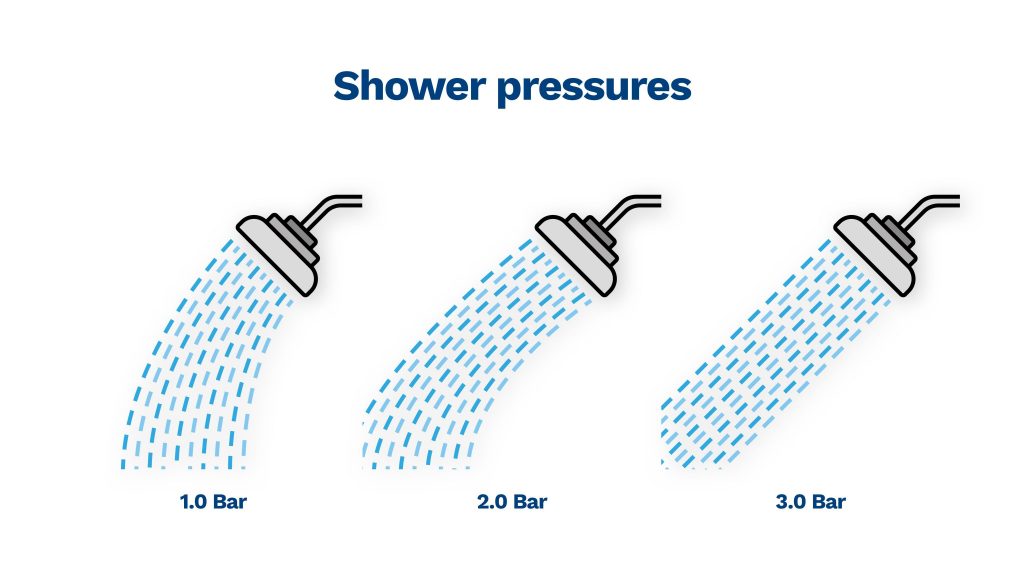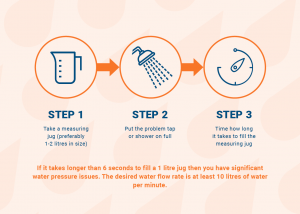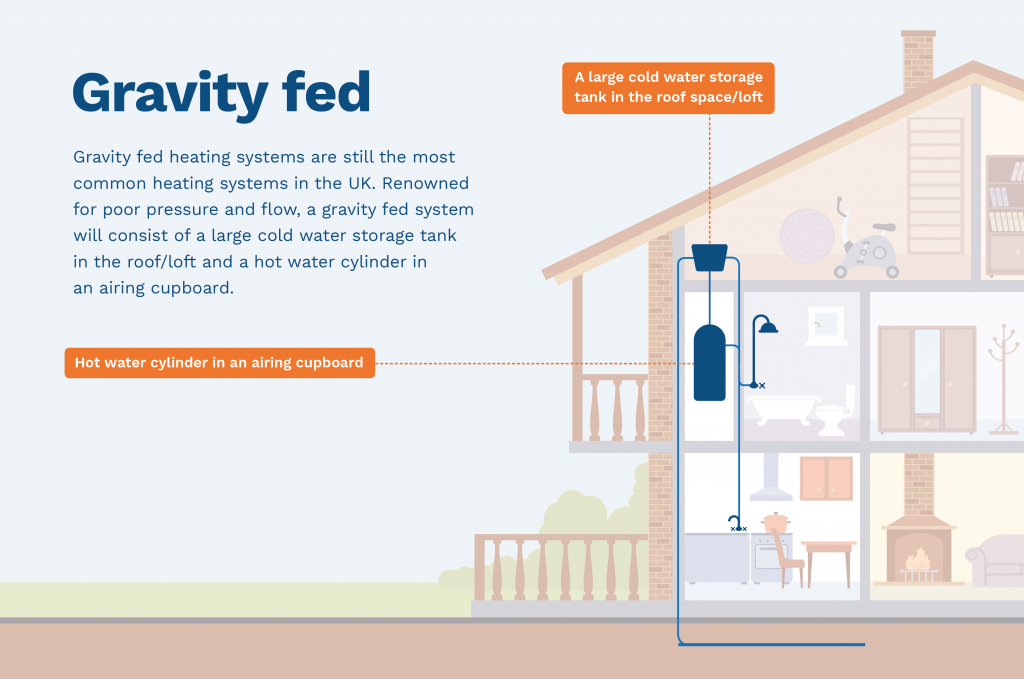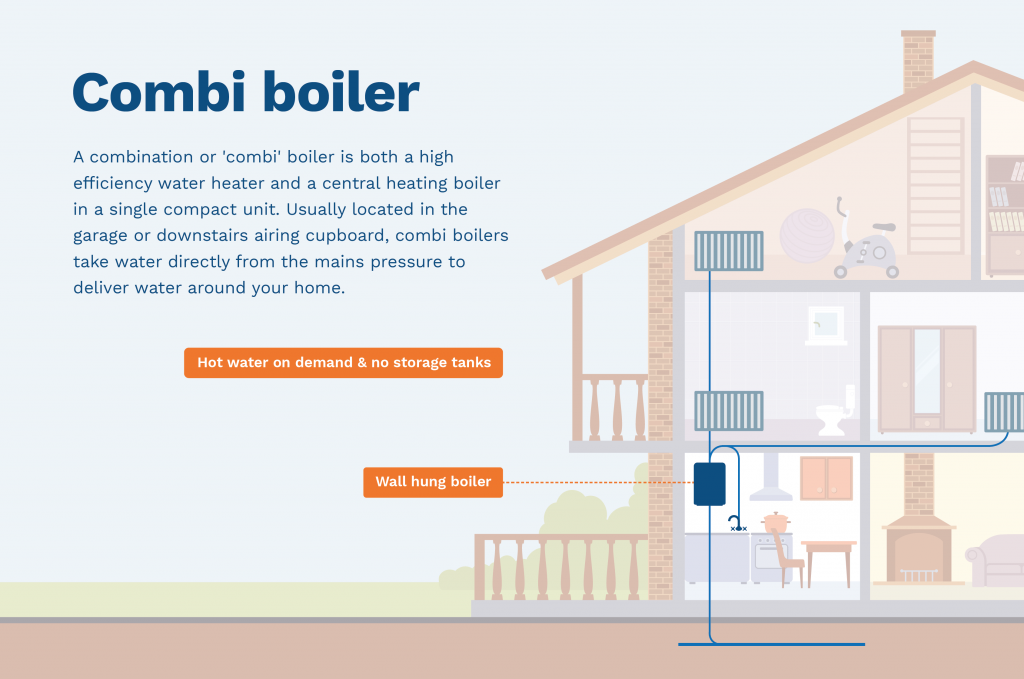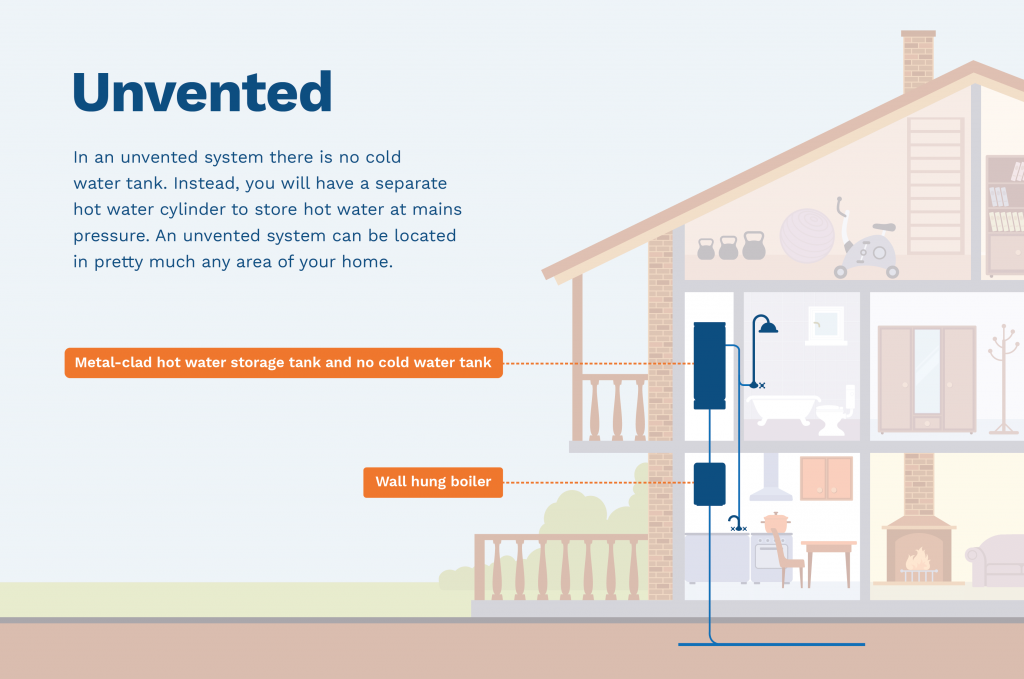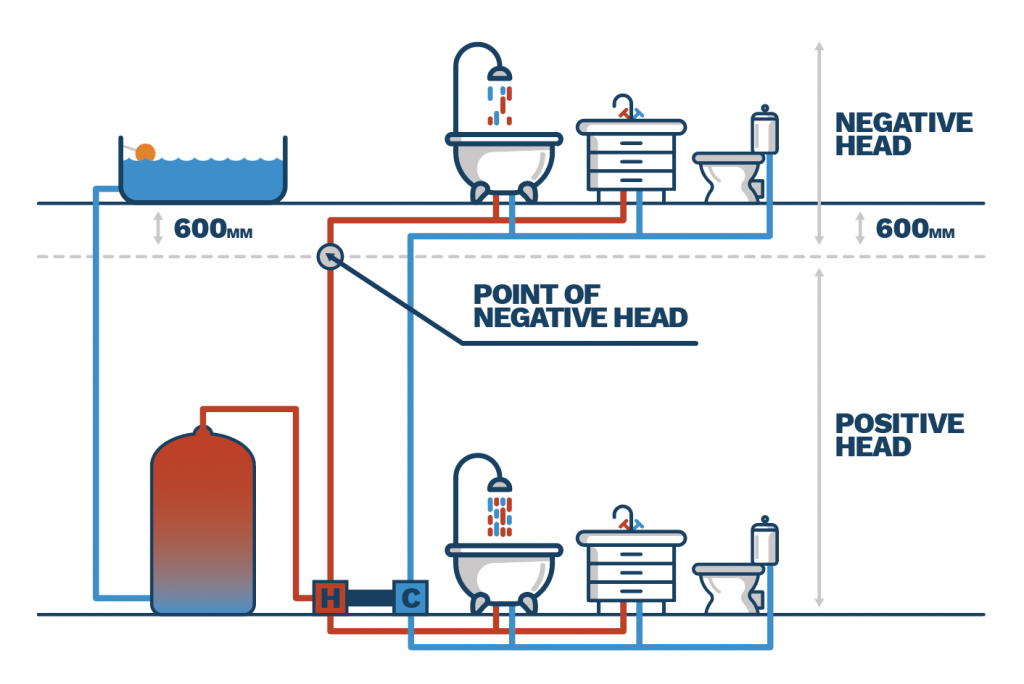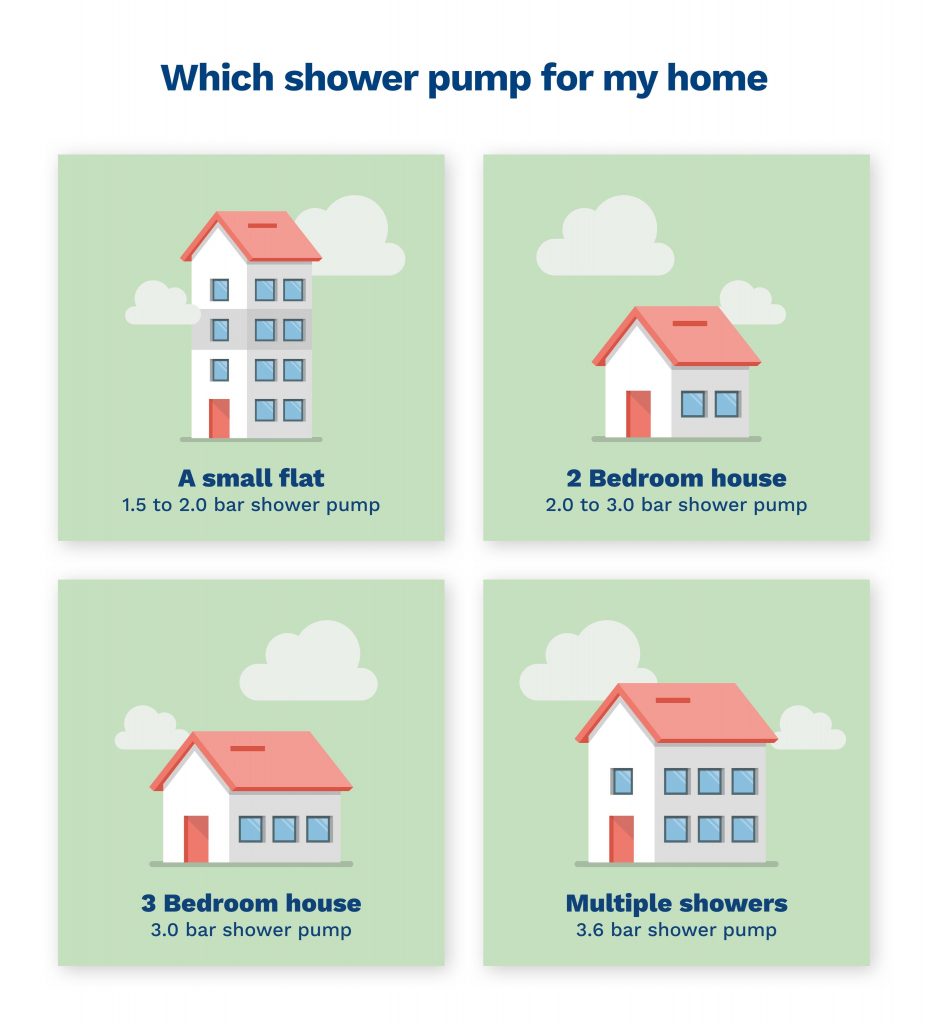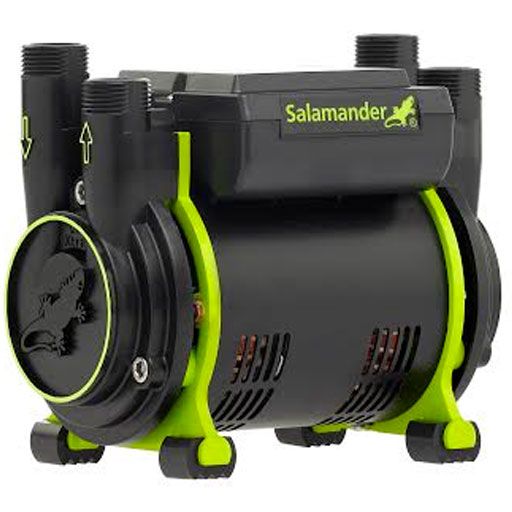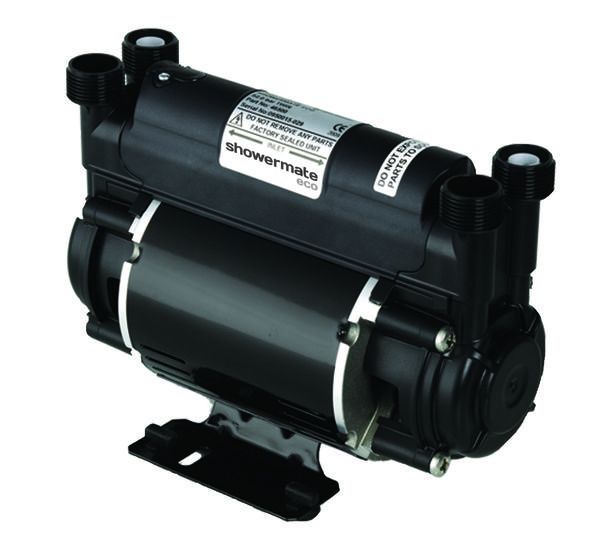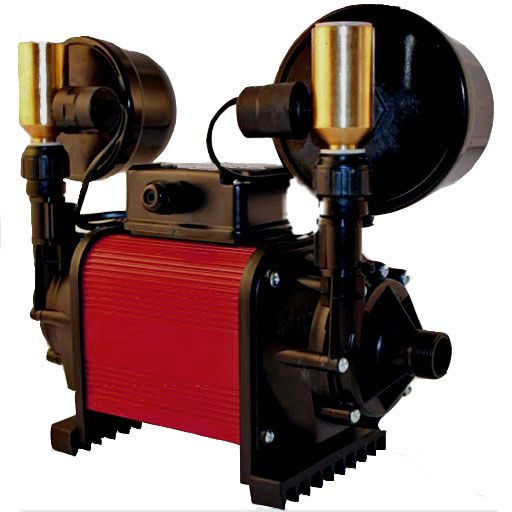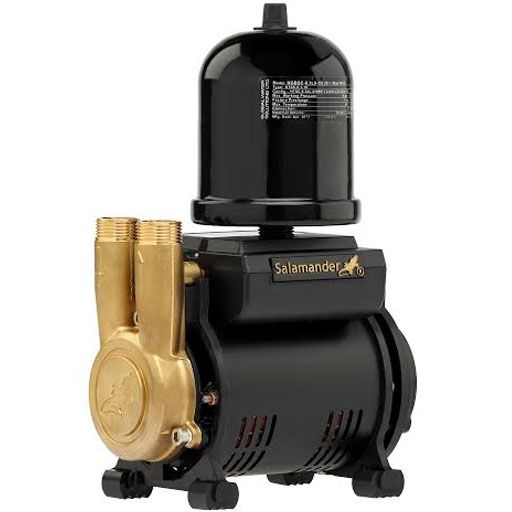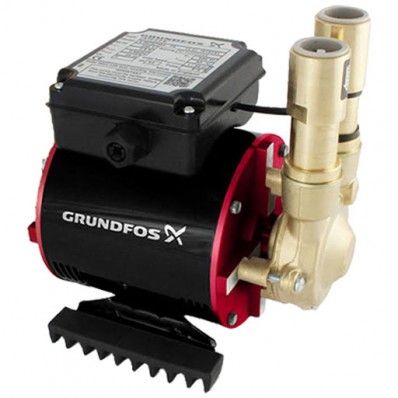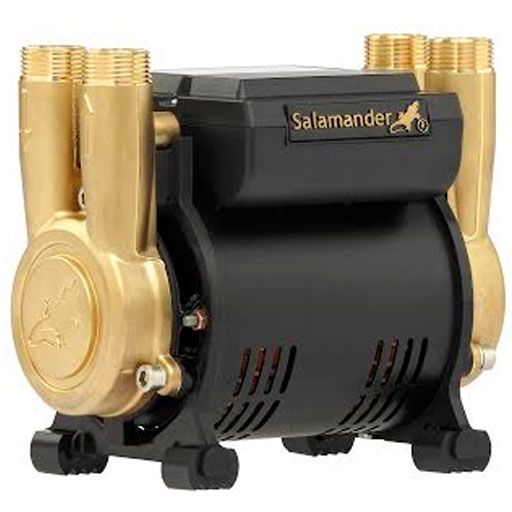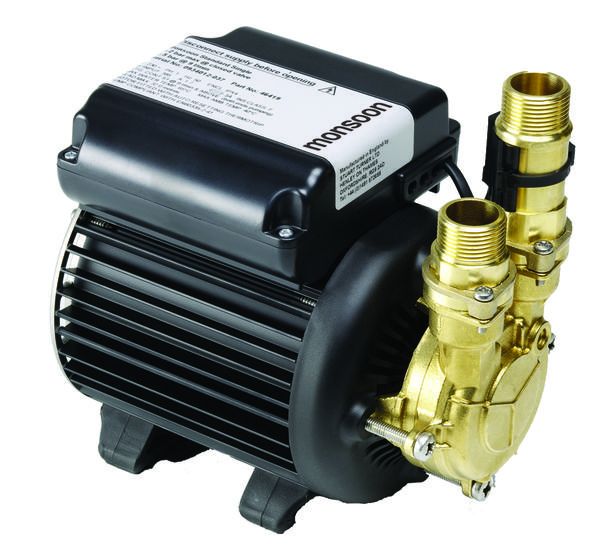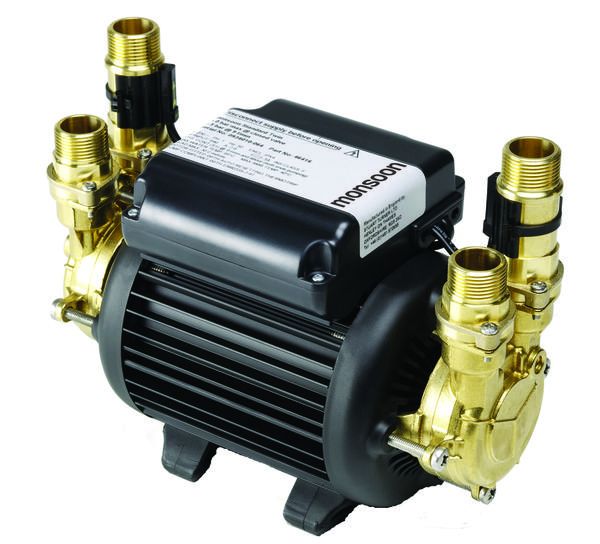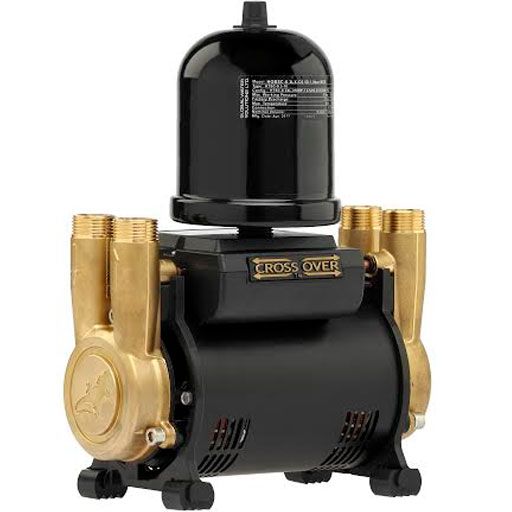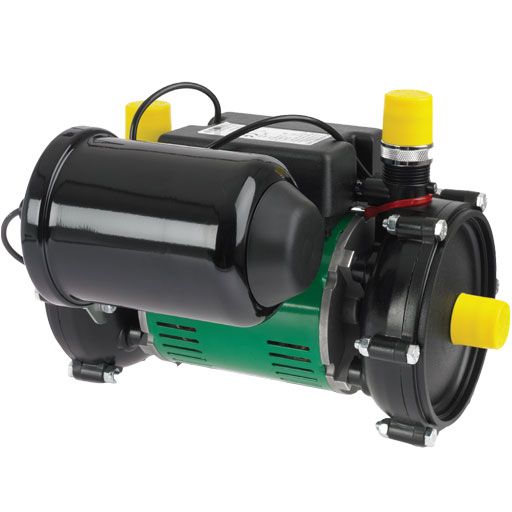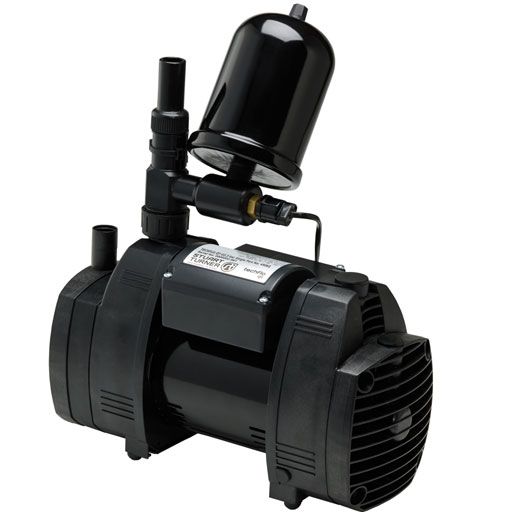The Complete Guide to Buying a Shower Pump
Whether you're grappling with low water pressure issues or wanting to enhance your showering experience, we’ve got you covered. From understanding the fundamentals of shower pump function to selecting the right type and size for your home, we delve into every aspect to help you make the right decision.
This guide will cover the following:
What is a shower pump?
Do I need a shower pump?
What are the different types of shower pumps?
Which pump type do I need?
Do I need a positive or negative (universal) shower pump?
What size shower pump do I need?
What brand should I buy?
What are the best shower pumps?
What are the quietest shower pumps?
How do I reduce noise vibrations?
So if your shower is lacking the required water pressure and you're looking to increase low water pressure, then this is the guide for you.
Let's get started.
What is a shower pump for?
A shower pump increases the thrust in your shower system, pumping more water through your pipes and increasing the pressure you experience at the showerhead.
The graphic below shows you the difference between 1.0 bar pressure, 2.0 bar pressure and 3.0 bar pressure.
Do I need a shower pump?
There are a variety of reasons you may be suffering from low water pressure at the showerhead. However, the most common explanation is that most of Britain's houses were built before the 1980s. In these decades, bathing was the bathroom habit of choice and there was no need for a high water flow rate. But times change, and now everybody wants a rejuvenating shower in their bathroom to start the day. If you'd like to test whether you have what's classed as clinical low water pressure, then follow the three simple steps below.
Here is how to test your water pressure:
Step 1: Take a measuring jug (preferably 1 litre in size)
Step 2: Place the measuring jug directly into the path of the problem showerhead
Step 3: Time how long it takes to fill the measuring jug
If it takes longer than 6 seconds to fill a 1-litre jug then you have significant water pressure issues and you'll need a shower pump.
What are the different types of shower pumps?
For most amateur bathroom fitters, this is where stuff starts to get a little complicated.
"Do I need a positive or negative head? Would I be better off with a single or twin design? And why does gravity matter so much?"
Here we give a brief description of each of the different types of pumps:
What is a positive head shower pump?
The best way to remember the key differences between a positive and negative pump is to think push or pull.
A positive head design pushes the feed of water into your shower.
It does this by relying on gravity to feed the water from your cold water storage tank into the pump. This flow kickstarts the impellers which then pumps the water.
This reliance on gravity means that your cold water storage tank needs to be at least 3 feet and 3 inches (990mm) above the showerhead.
This allows enough distance for the water to pick up speed and kick the impellers into action.
What is a negative or universal head shower pump?
Negative (Universal) head pumps work a little differently. Instead of relying on gravity, a negative (universal) pump pressurises everything in the pipe from the water tank to the mixer valve ensuring the system starts automatically when the shower is turned on.
This type of pump is the best choice for when your showerhead is at the same level or higher than the cold water storage tank.
These pumps are used in loft conversions, residential flats and home renovations or when your flow rate is less than 600ml per minute.
This graphic shows you the visual differences between a negative and positive head installation.
What is a single impeller shower pump?
A single impeller shower pump is used to boost one water supply. Most installations of this design are for pumping hot water, but it’s not uncommon to use a single design for pumping cold water either.
These pumps will usually come at the recommendation of a plumber and will often be used when you’re only having pressure issues with one type of water supply.
What is a twin impeller shower pump?
A twin impeller pump is used to boost both hot and cold water supplies at an equal flow. They work by taking both hot and cold water into one system and then boosting the pressure equally to one showerhead. These are the most common type of pump found in homes today.
What is a centrifugal shower pump?
A centrifugal pump uses impellers (a bit like an aeroplane engine) to boost the pressure of the water before ejecting it at a higher pressure to your shower. The impellers are usually made from plastic components which make a lot more vibrations.
What is a regenerative shower pump?
A regenerative pump type also uses impellers but takes in water from the side and is pushed around by the impeller before exiting the pump. The impellers are usually quite chunky which reduces aeration and vibrations.
Now you might be asking - which pump do I need? Let's find out.
Which pump type do I need?
Shower pumps can be complicated tools, and each home will create an exception to the rule. So you should always check the advice of a qualified plumber before installing a shower pump. However, if you know your negative from your positive heads, follow these six steps to finding your shower pump.
Step 1 - Do you have a gravity-fed, combi-boiler or unvented heating system?
The first thing you need to check is what kind of boiler you have in your home.
Your choice of shower pump will depend on whether you have a:
- Conventional gravity fed system
- Combi-boiler system
- Unvented heating system
Find each of the descriptions in the graphics below.
Conventional gravity fed system
Combi Boiler System
Unvented System
If you have a combi-boiler, you will not be able to fit a shower pump.
Combi-boilers are sealed and a change in pressure could potentially cause the system to implode.
If you are suffering pressure problems with a combi-boiler, you may need to replace your combi system or contact a plumber or heating engineer.
Step 2 - What shower type do you have installed?
The second thing you will need to check is the type of shower you have installed. In the UK there are three main types of shower. The manual mixer shower, the thermostatic mixer shower and the electric shower.
Manual Mixer Shower
The manual mixer shower does exactly what it says on the tin. You manually adjust the flow rate of both cold and hot water to your required pressure and temperature. In most cases, you will need a twin shower system to boost the pressure of both hot water and cold water supply.
Thermostatic Mixer Shower
Similar to a manual mixer shower, a thermostatic mixer shower is fed by both cold and hot water supplies. The thermostatic valve monitors the water and keeps the water at your desired temperature. In most cases, you will need a twin shower system to boost pressure of both hot and cold water supply.
Electric Shower
Electric showers are a tad different to mixer showers as they only take water from the cold supply. With a heating unit built within the electric shower, they can heat the cold water to your desired temperature. As they are completely disconnected from the hot water supply, you will likely need a single impeller pump. The common model chosen by plumbers is the universal showermate - model 46534.
Note: If you are purchasing a shower pump for an electric or power shower, we advise that you contact your shower provider or manufacturer for further information. Each shower is built to a different specification and may need a universal pump even if they follow each of the rules in this article.
Step 3 - Do you need a positive or negative (universal) pump?
How do you know if you need a positive or negative shower pump?
You will need a positive shower pump if the showerhead you are looking to increase in pressure is BELOW the cold water storage tank. Specifically, 600mm below the water tank. A positive pump type needs a flow rate of at least 0.6 litres per minute and relies on gravity to kickstart the impellers.
Your cold water tank is usually located in the attic. However, if you live in a single-storey flat or bungalow, it might be in an airing cupboard.
A negative showerhead pump works by sucking water from the tank to the shower and is the best choice for when the showerhead is at the same level or above the cold water tank. This can be used in loft conversions, for example.
Take a look at the graphic below:
As you can see, the top-level bathroom needs a negative head shower pump as it has less than 600mm between the tank and the showerhead.
The bathroom on the bottom level can use a positive head shower pump as the water has more than 600mm to flow through the pipes, kick-start the impellers to boost the water pressure.
You can find a complete guide on all things positive and negative shower designs here.
Step 4 - Do you need a single or twin impeller shower pump?
If you need to boost the supply of both cold and hot water to a shower, then you will need a twin type of pump.
If you need to boost the supply of either hot and cold water, then you will need a single design.
There may be cases where your cold and hot water supplies are too far apart for a twin design, in this case, you may need to purchase two single impeller pumps.
Step 5 - What pipesize do you have installed?
You also need to take into account the size of your pipes.
Standard pipesize in the UK is 22mm, but it’s possible for older houses to have a 15mm pipesize.
Double-check your pipesize as only a small selection of pumps cater for 15mm pipes. A 15mm pipe should not be connected to a pump designed for 22mm pipes.
If you are reading this article in the Republic of Ireland, things can get a little more complicated as your standard pipesize is 21mm, but you can also have the 15mm and 22mm options installed in your home.
Step 6 - What size shower pump do you need?
The size of pump you need will be determined by the pressure requirements of your home.
Think:
- How much pressure is needed to drive water to the taps and showers?
- How many water units will be in use at one time?
- Do I have more than one shower?
- How big is my home?
Think carefully about the questions above before purchasing a shower pump. It may seem like a good idea to purchase a cheaper, low-pressure shower pump, but if you have a large family then it may fail to adequately boost the water pressure in your shower.
Saying that we have a few general rules that should help you make a purchase decision.
A small flat
If you’re living in a small flat, apartment or house as a bachelor/bachelorette or with one partner, then
If you’re living in a small flat, apartment or house as a bachelor/bachelorette or with one partner, then you will need to purchase a pump with 1.5 to 2.0 bar pressure.
Small family (2 Bedroom House)
For a young family in a small, 2 bedroom house, we suggest purchasing something with around 2.0 to 3.0 bars of pressure.
A family of four (3 Bedroom House)
If you have a family of four people plus, then we suggest purchasing a pump with about 3.0 bars of pressure.
Multiple showers
If you have multiple showers and taps in use at one time, then we suggest purchasing a pump with over 3.6 bars of pressure. Something like 3.6 bar should provide enough power.
What pump brand should I buy?
That covers the basics, and now comes the next part: choosing from the various brands. The amount of choice can seem a little daunting, but in our opinion, there are three brands that stand out from the competition for their combination of high performance and low noise levels.
Stuart Turner
Stuart Turner is a major name in shower pumps industry. They are the largest brand in the shower pumping market and make pumps that cover the cheap and cheerful right through to what we call “brass class”. Known for quality design made with quality parts, the company has a fantastic reputation and their Monsoon design is one of the UK’s best sellers. Made from high-quality brass, there are various models to choose from, including single or twin shower head options, and they are all low-voltage and therefore cost-effective.
Salamander
Salamander is a technological giant of the pumping world. Investing heavily in a variety of pumping technology, Salamander was recently awarded the title of the quietest pump on the market by Salford University. Their product ranges cover both the more expensive and value options on the pumping market and are all made to the highest standards of quality.
Grundfos
As the largest pumping manufacturer in the UK, it was only a matter of time until Grundfos branched out into the shower pump market. So far they have seen huge success as they transfer innovative technology from other sectors into the shower sector.
Specifically, Grundfos pumps offer carefully designed, well-constructed and thoroughly reliable pumps which are easy to install and fitted with high-density long-life carbon-graphite seals, integral controls and anti-vibration feet.
Why do shower pumps differ so much in price?
Getting a decent shower in the morning shouldn’t cost too much. That said, in the pumping world at least, you always get what you pay for. The general rule is the more expensive you go, the higher the bar rating. The higher the bar rating, the stronger the water flow you can expect from your shower head.
You also need to consider the materials that the pump you are purchasing is made from. The more expensive you go, the more quality you get. Cheaper pumps are made from plastic and the parts will generally suffer quicker from wear and tear. More expensive pumps will use brass materials. Brass will last longer and will also make less sound.
As the cost of pumps vary depending on the make and model, it can be a tricky process deciding which to buy for your system. To help you decide, we’ve listed our three favourite pumps for each pricing category.
What are the best shower pumps?
The best shower pumps depend on exactly the situation you need them for. Here is a list of a few of the best for various situations.
Positive Head Shower Pumps - Under £150
Salamander CT75 Xtra 2.0 Bar
The CT75 is great people new to pumps. Not only is it relatively straightforward to install, but it is suitable for use in a number of different shower types, including conventional models, multi-function showers and those with Victorian can-style showerheads.
Stuart Turner ShowerMate Eco S2.0 Twin
The ShowerMate from Stuart Turner is a high-quality pump at a bargain price. Suitable for use in open-vented hot and cold systems, this twin shower design boosts the supply of both hot and cold supplies in equal measure. The ShowerMate also works equally well in both single-function and multi-function showers, in addition to bath or basin mixer taps. The ShowerMate Eco pumps from Stuart Turner also comes with a two-year warranty making it the perfect budget choice.
Negative Head Shower Pumps - Under £150
Grundfos Niagara STC-1.5 CN
Do you go for quality, or do go for price? Well, with the Grundfos Niagra, you can easily have both. A robust unit that is built to endure the hard years ahead, the Niagra is fitted with the finest long-life seals, along with high quality braided connection hoses. As a universal design, this system will automatically sync to both positive and negative head solutions.
Salamander CT Force 20SU 2.0
If you’re looking for ease of installation at a bargain price, then look no further than Salamander's finest, budget negative head shower pump. Built using Salamander’s unique technology (NVR), the CT Force has won several awards for its superb sound cancelling abilities.
Positive Head Shower Pumps - Under £300
Grundfos Amazon SSP-3.0B
Designed to the highest standard of performance and durability, the Grundfos Amazon SSP-3.0B is the premium option in the low-cost category. These pumps are very quiet due to anti-vibration feet and the long-life silicon carbide seals which are fitted as standard absorb any movement.
Salamander CT Force 20PT 2.0 Bar
The Salamander CT Force 20PT 2.0 Bar is one of the more expensive pumps on the market, and with the latest in patented noise vibration reduction technology – it definitely counts as money well spent. Pumping out a huge 2 bars of pressure, the twin pump boasts quality design, maximum power and reduced noise at a super low price. A must consider “middle of the road” option.
Negative Head Shower Pumps - Under £300
Stuart Turner Monsoon S2.0 Bar
Designed for installation into open-vented hot and cold systems, the Stuart Turner Monsoon is one of the most popular shower pump solutions on the market. Designed to the highest standard of both performance and durability, the Stuart Turner Monsoon pumps are brass bodied pumps with anti-vibration feet. They also feature an automatic pressure and float switch making it a tech-packed piece of kit for your bathroom.
Grundfos STR2-2.0 CN Twin Impeller
The STR2 range by Grundfos is one of the ultimate universal (negative head capabilities) pumps on the market. This regenerative style pump has been specifically designed to minimise turbulence within the pump head, giving a quality performance with low noise. This smooth and reliable negative head design is one of the best on the market, and it comes at an affordable price.
Positive Head Shower Pumps - £300 or above
Stuart Turner Monsoon S4.5 Bar
Moving on up the pricing categories we’re featuring another of Stuart Turner’s Monsoon pumps. Packed with all the latest pumping technology you can be assured of getting the rejuvenating and invigorating morning shower you dream of with this technology. Pumping out 4.5 bar worth of pressure, again this pump is brass bodied and fitted with anti-vibration feet. The premium option for the person who wants maximum pumping output in their home.
Salamander CT Force 30TU 3.0
The CT Force 30TU 3.0 is one of the best available pumps on the market. The 3 bar worth of pressure tends to feel way more powerful and with the unique NVR technology, you are again purchasing the latest tech with ultimate power.
Negative Head Shower Pumps - £300 or above
Salamander ESP75CPV 2.0 Bar
In need of a serious boost in pressure for a family of four? Take a look at one of the most powerful negative head pump systems on the market, the ESP75CPV. Built on a centrifugal system, the ESP76CPV pushes out 2 bars of pressure and can work on both positive and negative head solutions.
Stuart Turner TechFlo QT U3.3
Nicknamed the ‘whisper quiet’, you know what to expect with this piece of tech - pure silence. Built using Stuart Turner’s latest TechFlo technology, this centrifugal pump is being slowly phased out by the current Monsoon range, but is still one of the best pumps on the market.
Note: Find a more up to date guide on the Best Shower Pumps here.
What are the quietest shower pumps?
While it can be fantastic waking up to a pleasant and invigorating shower powered by a quality shower pump, it can create a whole new world of issues with noise, especially if the wife is still catching a few hours on a Sunday lie-in.
If you are worried about purchasing a noisy shower pump, we’ve listed the three quietest pumps on the market and also listed some further noise reduction tips below.
There are plenty of excellent sources of information out there about understanding shower pump noise ratings.
Stuart Turner Monsoon
Featuring a brass body, designed to minimise voltage and fitted with anti-vibration feet, the Stuart Turner Monsoon range is the premium market option for those looking for a remarkably quiet pump. A great option that will allow the family to sleep while you shower.
Salamander RP range
Salamander as a brand has a great reputation for producing quiet pumps. They’ve achieved this reputation by investing heavily in the now patented noise vibration reduction technology (NVR). This technology involves using innovative new materials to build their pumps and also fitting all their pumps with vibration-reducing feet. The RP range is the premium Salamander product available on the market as it matches pure power with less noise.
Grundfos Amazon
Grundfos pumps are known and trusted across the world for their performance and reliability. Often the go-to choice for contractors and plumbers, the Amazon range by Grundfos uses both low noise motors and anti-vibration feet to deliver minimal noise output.
How do I reduce noise vibrations from my shower pump?
Noise is one of the most common complaints about older shower pumps. The banging. The vibrating. Quite annoying if you're trying to sleep while a family member showers.
If you can't afford to buy a new, higher-quality and quieter shower pump, take at the tips below.
Check Surrounding Pipes
While each shower pump will be tested to ensure noise reduction, it’s always a good idea to do a pipe inspection to ensure all surrounding pipes are well supported and completely secure. Loose pipes tend to exacerbate vibrations and can make the noise experienced when working your shower pump to become unbearable.
Buy a Noise-Reducing Pad
It’s a simple and obvious tip but one that is often overlooked by plumbers and contractors. Particularly useful if your pump will be resting on wooden flooring, a noise-reducing pad can be used to soak up all the vibrations created by a shower pump. A cheap and effective investment.
Upgrade Your Pump
Most shower pumps will come with a long-term guarantee, especially if you’re purchasing a Stuart Turner or Grundfos shower pump. It’s worth checking your warranty. If the noise is gradually getting worse or is starting to make a high pitched whine, your warranty provider may replace your pump for free.
Change Location
The popular place to install a shower pump is within an airing cupboard. This can be a great place both well out of sight and out of harm’s way. The problem with an airing cupboard is that they tend to be acoustic and can amplify the smallest of noises from vibrations. Consider having your shower pump relocated to an inaudible location.
Final tips before buying a shower pump
Check Your Heating System
If you’re bypassing a plumber it's worth checking the nature of your domestic water system. You should know that under British regulations you cannot connect a shower pump to the main water supply. A shower pump must be connected to a system that is gravity fed. This is where the water is fed to the pump via a header tank or cistern. These are often located in the attic of a house.
Install a Break Tank
If you are faced with this issue you can opt to install a break tank that would put a pressureless tank between your mains supply and the shower pump. Alternatively, the flomate range by Stuart Turner can bypass this problem as the system combines both a pump and break tank in one piece of technology.
You cannot connect a shower pump to a combi boiler. A combi boiler is fed directly from the mains water supply and not a water tank. Combi-boilers are already working at their maximum output, so if you’re still having issues then you may need to buy a new combi boiler or contact your heating provider.
Buy the Right Size for Your Home
There’s a general rule in pump buying that a 2 bar pump is suitable for a one or two-person household and a 3 or 4 bar pump is suitable for a family. Make sure you check the power and performance of the pump you’re purchasing is suitable for your situation and circumstances. Nothing is worse than hopping in the shower last and finding only a dribble of power remains.
Check Your Home's Water Capacity
It’s important to check the capacity of your home’s water system. If you have a small hot water tank, then you definitely want to avoid a high-performance shower pump. A 3 bar or 4 bar pump will feel fantastic but your shower will literally last 2 minutes.
Check Your Pipework
Check the size of the pipework in your home’s water system. The pump comes with piping connections of 15mm and 22mm diameter. The larger diameter can deliver twice the volume of water than the smaller diameter. But the pump’s connection must fit with the rest of the house’s plumbing. Never connect a 22mm pump to plumbing with a diameter of 15mm.
Location is important
As mentioned earlier in this article, pump location can make a huge difference when it comes to pumping satisfaction. Choose a quiet and level location for the pump, as even the most expensive pumps will vibrate and make a noise when operating. Consider purchasing a polystyrene pad or a specially designed noise reduction mat to dampen out any noise.
Disclaimer: Anchor Pumps acknowledges that the information included in this blog is based on their interpretation of the data presented. Shower pumps can be complicated tools and each home will create an exception to the rule. Always check the advice of a qualified plumber before installing a shower pump.


